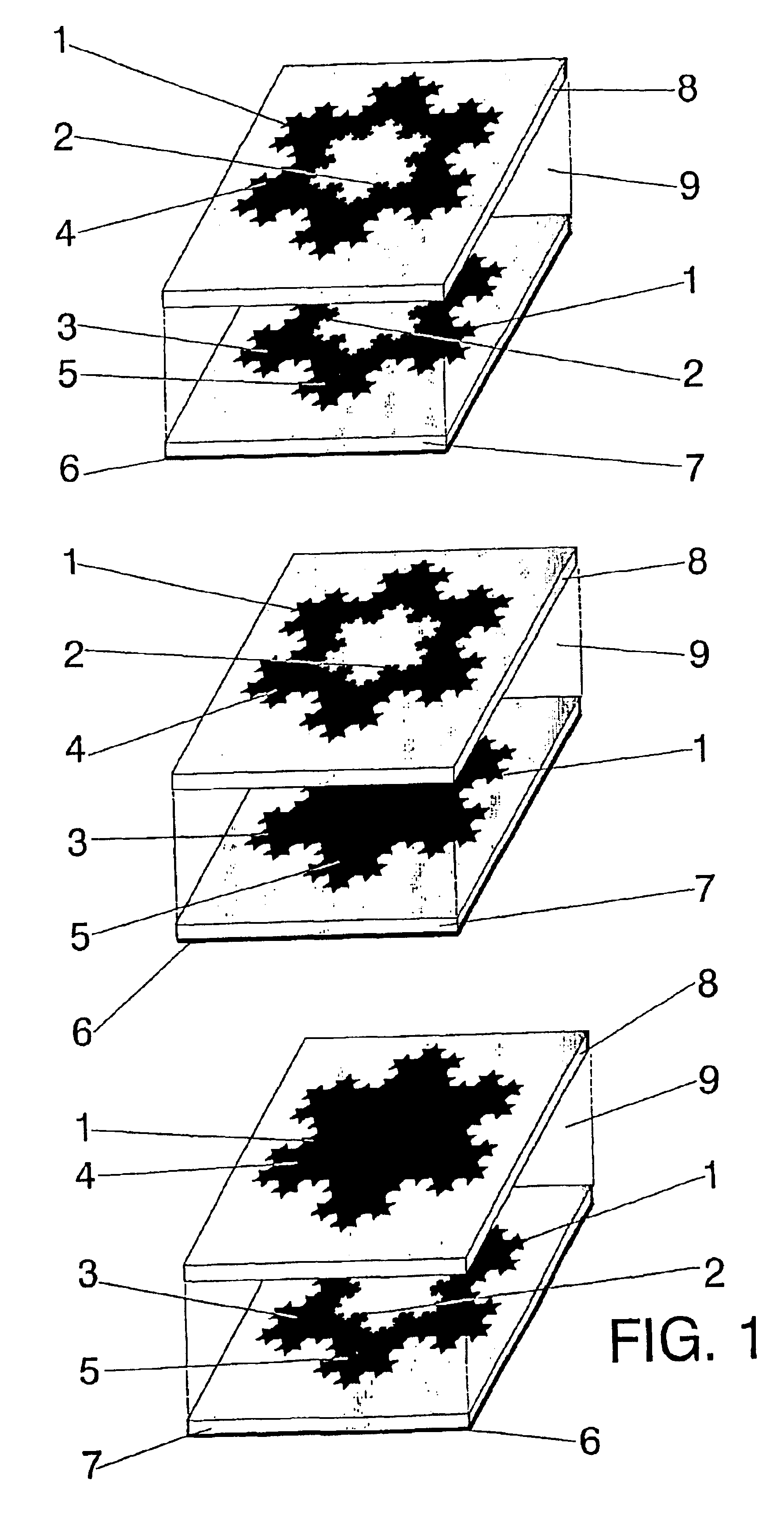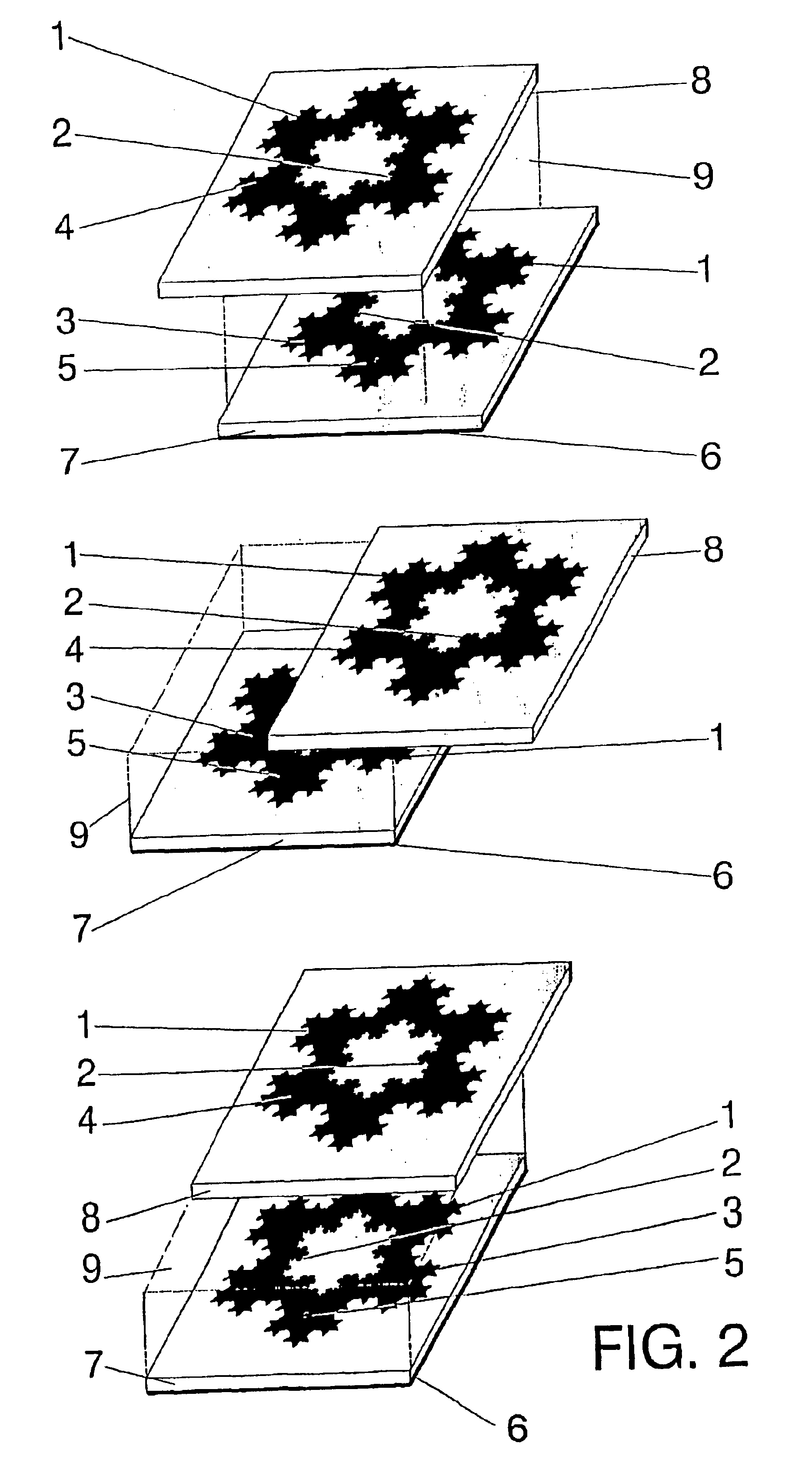Miniature broadband ring-like microstrip patch antenna
a microstrip patch and patch antenna technology, applied in the direction of resonant antennas, non-resonant long antennas, substantially flat resonant elements, etc., can solve the problems of reducing the bandwidth of the whole antenna set, reducing the efficiency of the ring patch antenna, and reducing the radiating resistance. , to achieve the effect of enhancing the bandwidth of the whole antenna set, reducing the size, and large bandwidth
- Summary
- Abstract
- Description
- Claims
- Application Information
AI Technical Summary
Benefits of technology
Problems solved by technology
Method used
Image
Examples
Embodiment Construction
FIG. 1 describes three preferred embodiments for a MSFR antenna. The top one describes an antenna formed by an active patch (3) over a ground plane (6) and a parasitic patch (4) placed over said active patch where at least one of the patches is a RSFS (e.g. FIG. 1 (top) both patches are a RSFS, only the parasitic patch is a RSFS (middle) and only the active patch is a RSFS (bottom)). Said active and parasitic patches can be implemented by means of any of the well-known techniques for microstrip antennas already available in the state of the art, since its implemenation is not relevant to the invention. For instance, the patches can be printed over a dielectric substrate (7 and 8) or can be conformed through a laser cut process upon a metallic layer. Any of the well-known printed circuit fabrication techniques can be applied to pattern the RSFS over the dielectric substrate. Said dielectric substrate can be for instance a glass-fibre board, a teflon based substrate (such as Cuclad®) ...
PUM
 Login to View More
Login to View More Abstract
Description
Claims
Application Information
 Login to View More
Login to View More - R&D
- Intellectual Property
- Life Sciences
- Materials
- Tech Scout
- Unparalleled Data Quality
- Higher Quality Content
- 60% Fewer Hallucinations
Browse by: Latest US Patents, China's latest patents, Technical Efficacy Thesaurus, Application Domain, Technology Topic, Popular Technical Reports.
© 2025 PatSnap. All rights reserved.Legal|Privacy policy|Modern Slavery Act Transparency Statement|Sitemap|About US| Contact US: help@patsnap.com



